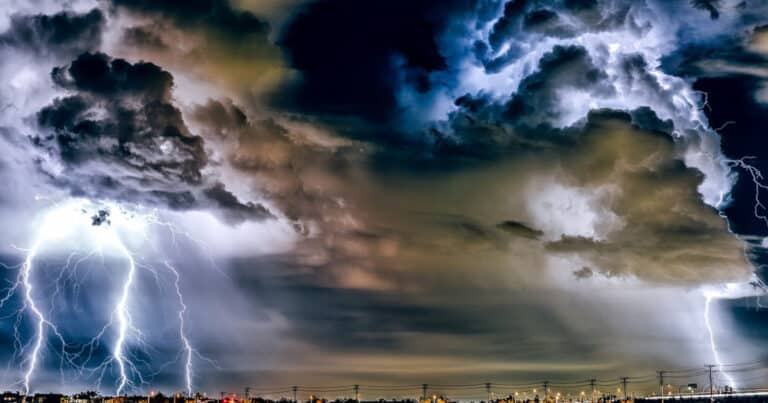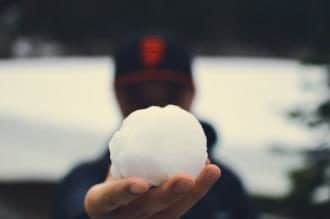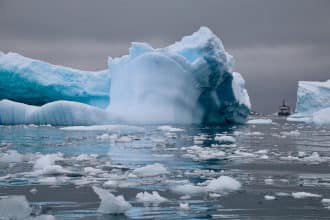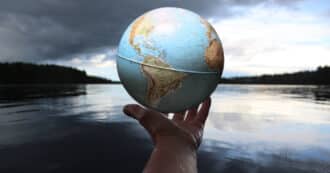By Harry Cooper – Climate change is one of the most pressing issues in today’s world, and like most important issues, it is very prominent in media and current events. Climate change is being talked about on news outlets, in political discussions, and in conversations in day to day life.
Because global warming is a hot topic rooted in complicated environmental science, it often feels like an issue that is hard to comprehend without some scientific background on climate. In order to fully understand climate change as a topical issue in today’s world, it is important to understand the basics of what a changing climate means scientifically.
What Is The Difference Between Weather and Climate?
One of the biggest misconceptions people have about climate is the conflation of weather and climate. Many people assume that the terms weather and climate are interchangeable, but mixing the two up like this can lead to some issues in understanding what it means to live in a world with a changing climate.
Weather refers to the atmospheric conditions at any given point in time at a certain place. This is the kind of thing you see in your daily weather forecasts: what temperature it will be, if it is going to rain or not, if it will be sunny or cloudy, the speed and direction of wind etc.
On the other hand, climate is the average weather conditions of a place, measured over a period of time which is often 30 years. Therefore, when talking about climate, people don’t talk in terms of specific weather conditions at a certain place in time, but rather about weather trends. For example, saying it is usually hot in the summer, or usually rains in the spring.
Differences in Measuring Weather and Climate
In order to understand climate change, it is also important to understand how weather and climate are both measured. Weather forecasts seek to explain what the weather will be like in the next few days or weeks. This relies on interpreting numerical measurements of things like air pressure, humidity, temperature, and wind speed that can indicate something about weather patterns in the coming days.
Climate is a little more difficult to predict than weather. Weather looks at signs in the atmosphere to see how it will behave. However, since predicting climate requires scientists to look at a long period of time, the signs that a weather forecaster would use to predict the weather won’t help someone trying to create climate predictions for the next hundred years.
Instead, climate scientists have to look at past climate trends to try and predict how climate will behave in the future. By observing the way that climate has changed over a past period of time, scientists are able to look at trends in climate to determine what the future of the Earth’s climate will look like.
Why the Distinction Matters When Talking about Climate Change
Rising global temperatures due to greenhouse gases are causing a lot of harm in our world. The affects of climate change have caused rising sea levels, intense droughts, animals going extinct, and general environmental destruction.
How bad climate change is something we’ve all heard a lot about, but if climate change is causing so much damage in our world, how come we don’t see the atrocities brought on by climate change in our everyday lives? It seems like a simple question, but it’s a very important one to ask, and the answer can be found in understanding the difference between weather and climate.
On February 26th 2015 Jim Inhofe, a senator from Oklahoma and staunch climate change denier, spoke on the senate floor. During his speech Inhofe presented a snowball that he had made outside just before entering the building. Inhofe explained that climate scientists talk about the increasing danger of global warming, but how could it be cold enough to snow if the threat of climate change was real? After his short speech, senator Inhofe playfully tossed his bombshell evidence aside and sat down.
While senator Inhofe’s argument doesn’t make a lot of sense, it’s hard to understand why. The biggest flaw in Inhofe’s snow based argument, was a classic case of not knowing the difference between weather and climate.
Global warming means that global temperature trends are rising but it doesn’t mean that the Earth is warming uniformly, or even that everyday is going to be hotter than the last. So while climate change may mean less snowy days as time passes, it doesn’t mean that it can’t snow at all.
How Does Climate Change Affect Weather?
So, if the Earth’s climate getting warmer isn’t going to stop people from ever seeing a snowy day, how does climate affect weather conditions? Earth’s average temperature has risen about 1.1 degrees Celsius since the industrial revolution, and while that may not seem like a lot, that change isn’t distributed evenly in every place, or even in every season of the year. Since the Earth is already heated unevenly, it makes sense that it would warm unevenly too.
Some places in the world have warmed less than others, while some have even gotten colder on average. This temperature increase is also not even for every time of the year. Every season has seen different rates of increasing temperatures. In most parts of the US average winter temperatures have increased at twice the rate that average summer temperatures have.
Another important effect that climate change has had on the Earth’s weather patterns is the increased amount of extreme weather events. This means that occasional instances of temperature and weather extremes have become more common, such as record high temperature days, heavy precipitation, droughts, storms, and even cyclones. Since most of these extreme temperatures are extreme highs, these events often bring up the average global temperature, as well as cause serious damage to communities and the environment.
Examples of the Effects of Climate Change
As global climate is slowly getting warmer, many ice stores found in the Arctic and Antarctica are starting to melt. This melting of the ice has caused global sea levels to slowly rise. As these sea levels continue to rise, it will start to cause some trouble for people living on coasts and in regions below current sea level. In the coming decades, if sea levels continue to rise, many people may find their homes experiencing frequent flooding, or even become immersed completely underwater.
It is estimated that by the end of the century in 2100, the homes of approximately 200 million people around the world will be underwater. Along with these 200 million people, another 160 million people will experience increased annual flooding, making for a total of approximately 360 million people either displaced, or greatly affected by rising sea levels. The majority of these people live in Asian countries such as China, Bangladesh, India, Thailand, Vietnam, and Indonesia and they will become refugees. However, many non Asian countries would also be affected such as Germany, the UK, the Netherlands, Brazil, and the US.
Another way in which weather is affected by climate change is through decreasing rainfall in some areas, and powerful droughts in other regions. As the average air temperature gets warmer, and some areas experience more extreme high temperatures in the summer months, more water stored in lakes, plants, and the ground will evaporate, making water a scarce resource in places affected by these droughts. Warmer temperatures not only cause droughts to happen in more places, but regions undergoing naturally occurring droughts often experience more intense drought conditions.
Warmer average temperatures not only cause drought through more evaporation, but also through decreasing snowfall. Many water sources are fed by snow melting on mountain tops in the spring and running down the mountain into rivers and lakes. When global temperatures rise, winters become shorter, and the period of time that snow can fall on these mountains also shortens. As a result there is less melting snow to feed into water sources in the spring.
Weather, Climate, and Religion
What is the relationship between weather, climate and religion? A fascinating study by Yale researches explored this topic, focused on the primary question “Why Are Gods Thought to Cause Weather?“. This study found that “resource stress itself appears to be the more important variable predicting both religious belief and sharing”. In other words, societies that experience resource stress, such as from a lack of rain, are more likely to look to their God or gods to save them and to share resources to help each other get through hard times.
Another way to express this concept is the aphorism “there are no atheists in foxholes”, which means that in times of extreme stress or fear, people are drawn to belief in a higher power. Climate change and extreme weather can be scary and overwhelming. Yet religion can give us the inspiration and communal force to overcome these challenges and save our planet.
* Featured image source







